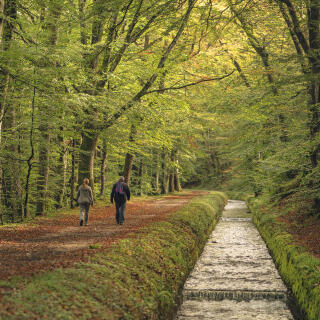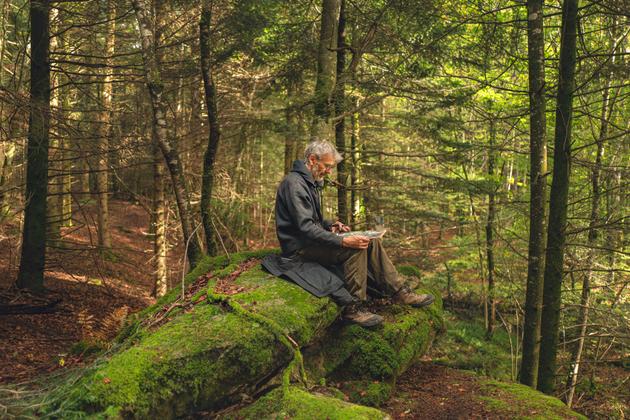


Le Monde's top 10 destinations | #3 France's intriguing Black Mountain
FeatureWhere to travel in 2024? This year, Le Monde answers that question with 10 travel picks accessible by train from France. Discover two travel guides per week throughout December. Number 3: The Massif Central's Montagne Noire.
At the southernmost tip of the Massif Central, overlooking the Thoré Valley, stands the Montagne Noire. The name of this granite relief ("Black Mountain" in English), straddling the Aude and Tarn départements, immediately conjures up mysterious imagery. It's the thick mantle of forest covering the mountain that gives it such a dark side. Beech, fir, chestnut and bald cypress grow happily in well-watered soil. The Black Mountain catches the clouds as they pass, bringing regular rainfall from the Atlantic and sea breezes from the Mediterranean.
Numerous natural watercourses encircle the slopes, lined in places with the foliage of beautiful royal fern. The regional Autan wind, also known as the "devil's wind," blows through the mountains, its gusts causing the trees to sway. The Canal du Midi, the waterway linking the Atlantic Ocean to the Mediterranean Sea, or at least its sources, originates in the heart of this enchanting national forest. Few are aware that this great man-made canal, built between 1667 and 1681, has a natural source.
To find the starting point, you have to climb up to the Prise d’Alzeau (Alzeau spring), located on the border between the Aude and Tarn départements. At an altitude of 680 meters, it is from this first stream whose water is captured and then diverted that the Rigole de la Montagne (mountain channel) originates. A channel designed by Pierre-Paul Riquet, who constructed the Canal du Midi. Deeply knowledgeable about the region, "Riquet quickly realized that the Black Mountain's river system was so rich and regular that it could supply the canal in all seasons. All he had to do was convince King Louis XIV and his minister Jean-Baptiste Colbert of the effectiveness of his project," explained Samuel Vannier, a Canal du Midi archivist.

To illustrate his point, Vannier disappeared behind the shelves overflowing with old documents, which are carefully stored at the Port Saint-Etienne in Toulouse. These old maps, which bring to life the first routes of the channel, have the damp smell of old parchment. In 1665, to overcome the last remaining reservations of the Languedoc people who denigrated his project, Riquet proposed building a small "trial channel" at his own expense. The first attempt was conclusive, and his idea worked: it was indeed possible to divert the natural watercourses of the Black Mountain to feed the future canal.
Starting in 1667, it took five years to dig the two channels designed by Riquet, first the mountain channel and then the plain channel, which end up leading to the canal from the Alzeau spring. They have been classified as a UNESCO World Heritage Site since 1996, along with all the other constructed elements of the "two seas" canal. "From Alzeau to the Seuil de Naurouze, where the Canal du Midi emerges, the water travels some 70 kilometers in around 40 hours," explained archivist Vannier.
You have 65% of this article left to read. The rest is for subscribers only.
